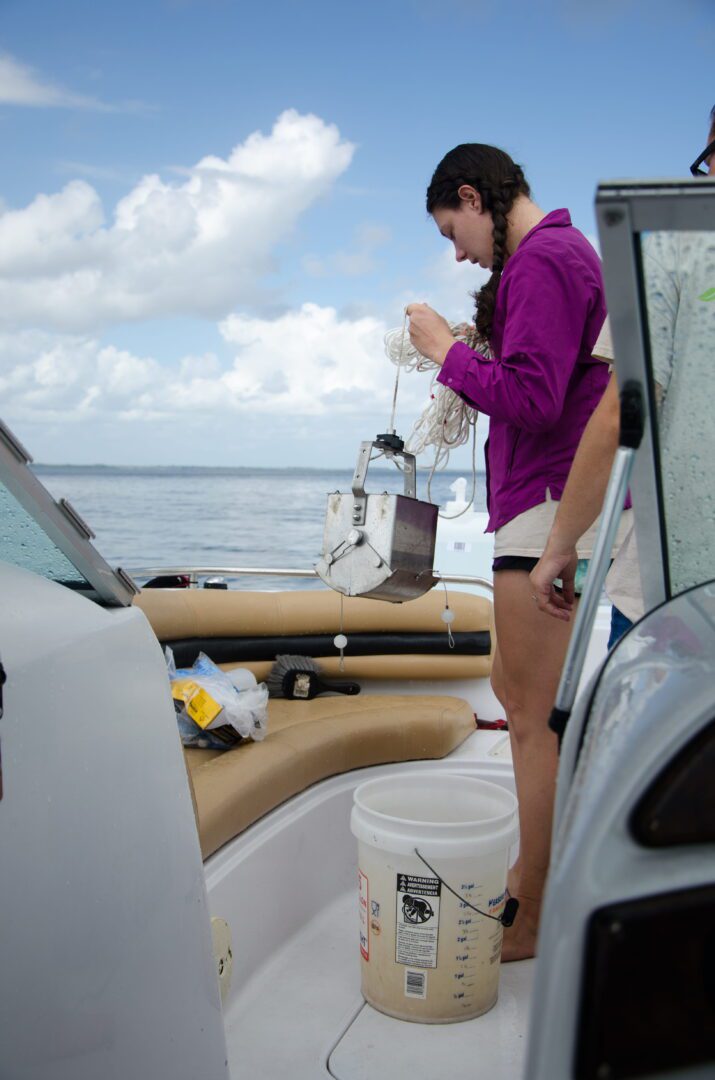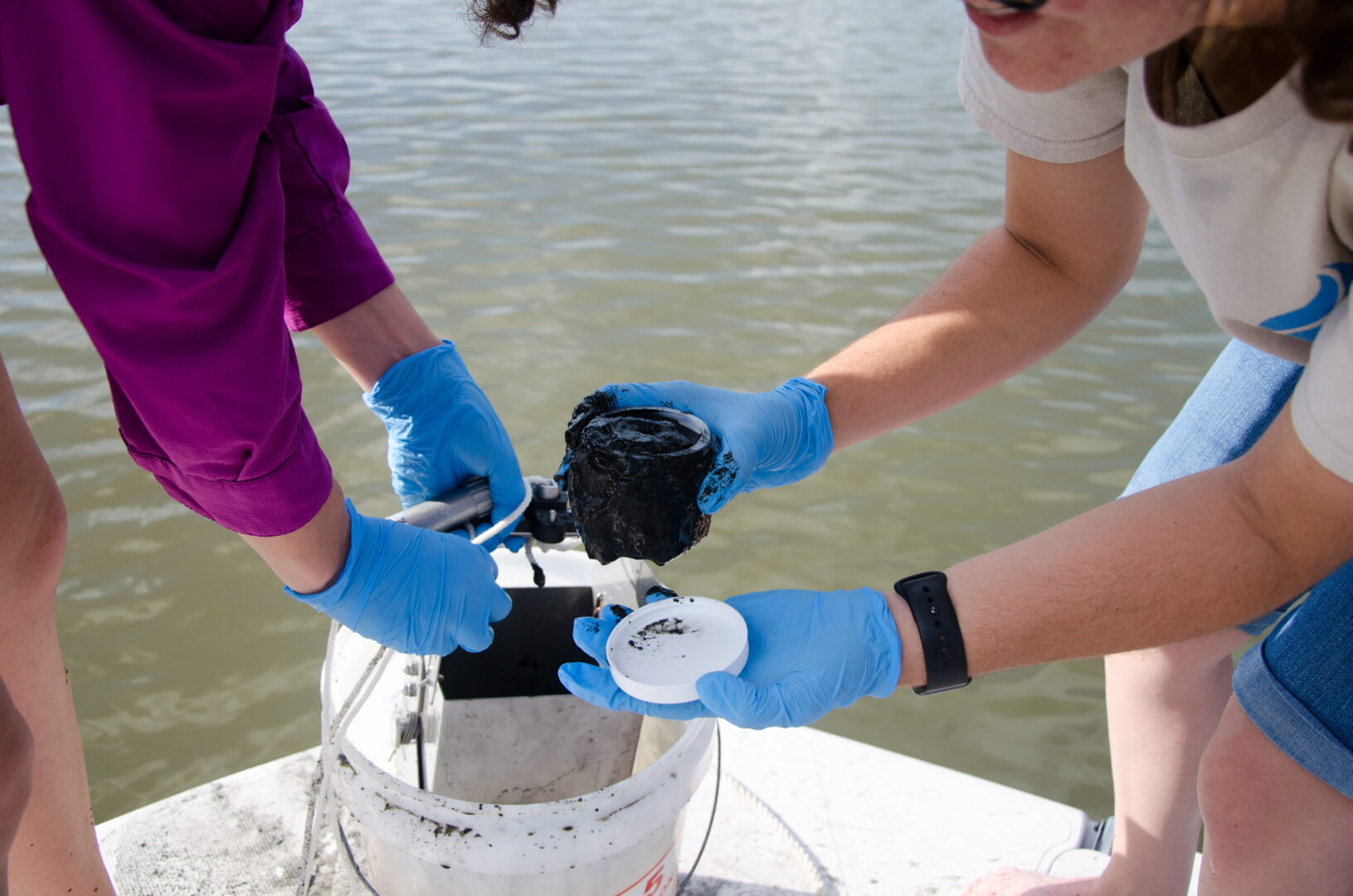Brevard County PFAS and Priority Pollutant Sampling
As part of an investigation into potential concerns regarding Per- and Polyfluoroalkyl Substances (PFAS), Brevard County Natural Resources Management Office contracted with Applied Ecology, Inc. to determine the level of emerging contaminants throughout the County.
In 2016, the EPA reduced the Health Advisory Level for PFAS (PFOA + PFOS) in drinking water from 400 to 70 parts per trillion. This triggered the Department of Defense to sample for PFAS at all its facilities. During the summer of 2018, the Department of Defense released data indicating high levels of PFAS in groundwater at Patrick Air Force Base (PAFB) and Cape Canaveral Air Force Station. High levels of PFAS were attributed to decades of prior use of Aqueous Film Forming Foam for fire-fighting. Levels at PAFB were up to 4.3 million parts per trillion while levels at Cape Canaveral Air Force Station were 1 million parts per trillion. It was unknown if the PFAS was moving through the groundwater to adjacent communities off-base and the Indian River Lagoon. Adjacent communities were concerned about their drinking water supply, so the School Board tested drinking water fountains at all its beach schools in August. The drinking water, which comes from mainland sources and is piped to the beach, was not contaminated with PFOS or PFOA. The County, Satellite Beach, and Cocoa Beach also tested irrigation water north and south of PAFB in July and August. Most levels were below the drinking water standard, but some wells not used for drinking water did have levels above the drinking water health advisory level. Out of an abundance of caution, sensitivity to community concerns, and to better understand the distribution of PFAS levels in Brevard County waters, the County contracted to test 50 locations distributed county-wide.
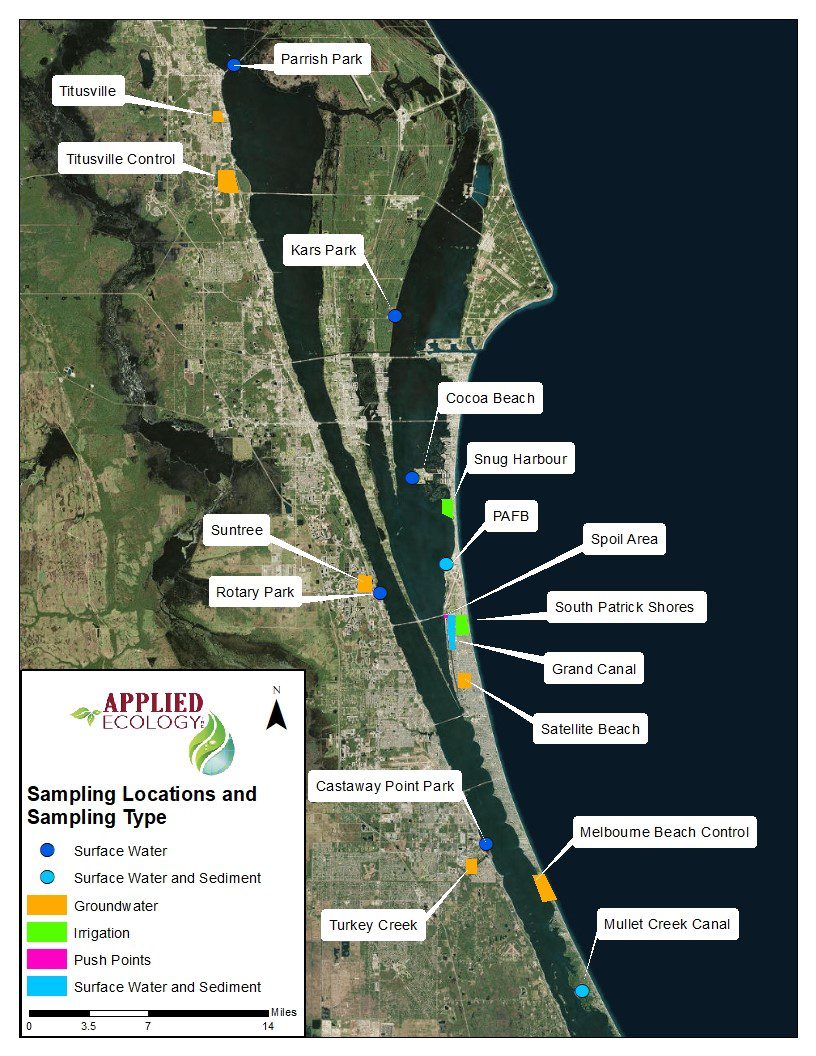
Locations of PFAS sampling throughout Brevard County, Florida.
Analytes Tested
%
Total Phosphorus Exceedances Above FDEP NNC
%
of Samples WITHIN Surface Water Standards for PFAS
PPCPs Detected in Plant Tissue
Applied Ecology staff collected samples from 50 locations distributed county-wide from shallow ground water wells, shallow irrigation wells, deep irrigation wells, lagoon water from the Indian River and Banana River, and muck from the bottom of the lagoon. The County also contracted to sample three shallow irrigation wells in South Patrick Shores for the full suite of federally listed priority pollutants, carcinogens, volatile and semi-volatile organics, pesticides, heavy metals and radionuclides due to community concerns about cancer rates in that area. In September and October, sample sites were identified, permissions were obtained, samples were collected, and sent to a state certified lab for analysis. Lab analyses were conducted in October and November.
Here is what we found…
- Shallow groundwater wells in large conservation areas were sampled in the Enchanted Forest and Coconut Point to determine background levels present on the mainland and the barrier island. These had levels of PFOS plus PFOA that ranged from 6.6 to 8.4 parts per trillion.
- Shallow groundwater wells located in residential areas in Titusville, Suntree, Palm Bay, Cocoa Beach (push points), and Satellite Beach had PFOS plus PFOA levels that ranged from 7.6 to 493.8 parts per trillion.
- Deep irrigation wells (most irrigation wells are deep to avoid salt and iron) located in residential areas in Cocoa Beach and Satellite Beach had PFOS plus PFOA levels that ranged from 7.6 to 8.4 parts per trillion.
- Shallow irrigation wells located in residential areas in Cocoa Beach and Satellite Beach had PFOS plus PFOA levels that ranged from 36.5 to 100.4 parts per trillion.
- Lagoon water located off Titusville, Rockledge, Palm Bay, Kars Park Merritt Island, Cocoa Beach, PAFB, the Grand Canal in Satellite Beach and Melbourne Beach had PFOS plus PFOA levels that ranged from 9.2 to 126.9 parts per trillion.
- Muck samples collected near PAFB, in the Grand Canal and Melbourne Beach had PFOS plus PFOA levels that ranged from 0.62 to 8.83 parts per billion, well below the 1,260 parts per billion Human Health Soil Screening Level.
- Three shallow irrigation wells in South Patrick Shores were tested for priority pollutants; including: carcinogens volatile and semi-volatile organics, pesticides, herbicides, and heavy metals, in addition to dioxins and radionuclides (representing over 150 analyzed individual constituents) which came back safe for most everything tested. The following items were detected above Florida’s Groundwater Cleanup Target Levels (GCTLs) which are based upon groundwater consumption, but below Irrigation Water Screening Levels (IWSLs) for residential use: the metal manganese and the pesticide dieldrin. Manganese is naturally ubiquitous in the environment, trace amounts are essential to animal health, and the concentrations measured were representative of typical background levels for the surficial aquifer. Dieldrin (detected at one well) is a broad-spectrum insecticide that was historically frequently used to control termites and can have potential health impacts at certain concentrations (if used for groundwater consumption). Strontium another metal was found above the Florida GCTL with no available IWSL for comparison. Strontium is a naturally occurring metal in groundwater, contained in certain foods, and typically seen in Florida’s groundwater in the measured concentrations.
Based on our findings, the County is continuing muck dredging in its efforts to restore Indian River Lagoon. To view the full report is available, click here.
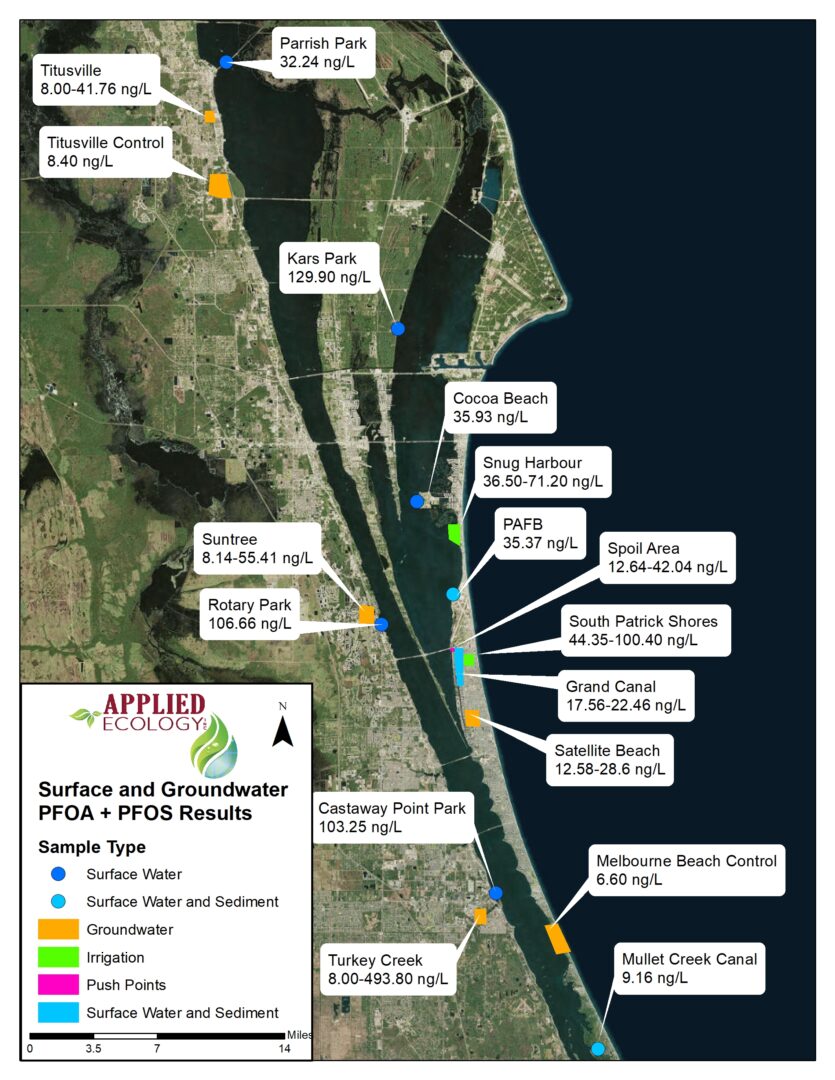
Surface water, groundwater monitoring wells, and irrigation wells PFAS (PFOA+PFOS) results. Some of the minimum values provided include estimated minimum detection laboratory values. Units provided correspond to parts per trillion.
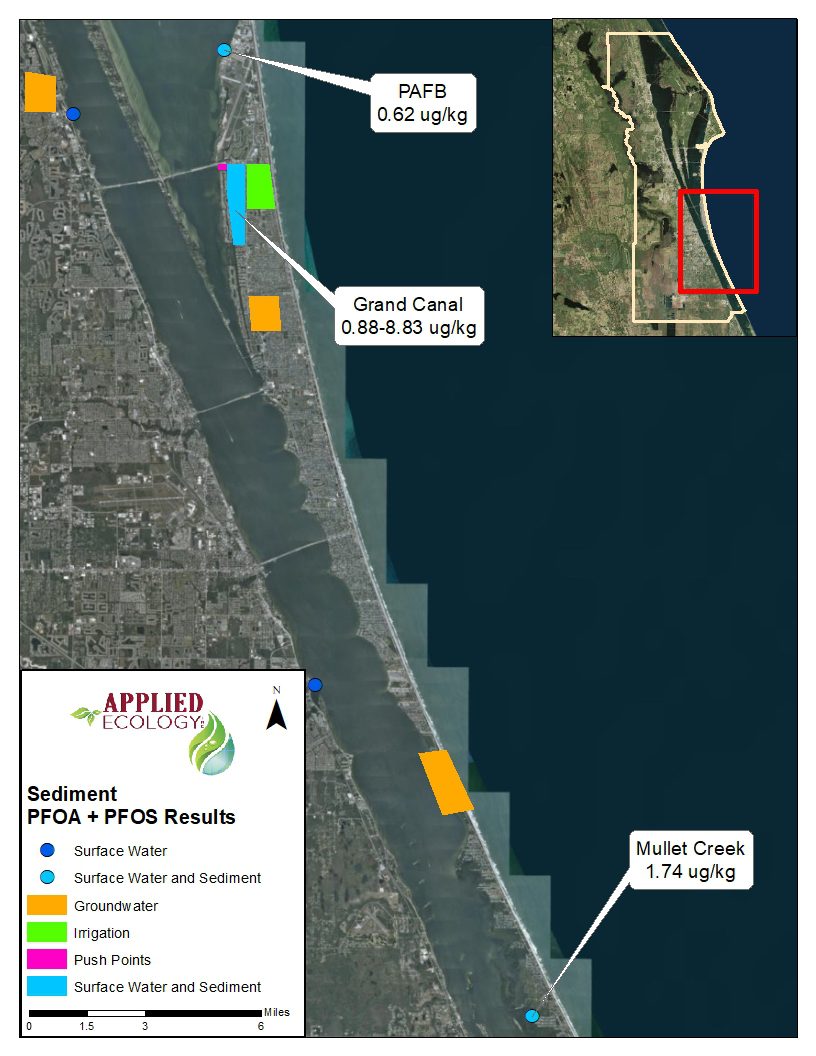
Surface water, groundwater monitoring wells, and irrigation wells PFAS (PFOA+PFOS) results. Some of the minimum values provided include estimated minimum detection laboratory values. Units provided correspond to parts per trillion.

